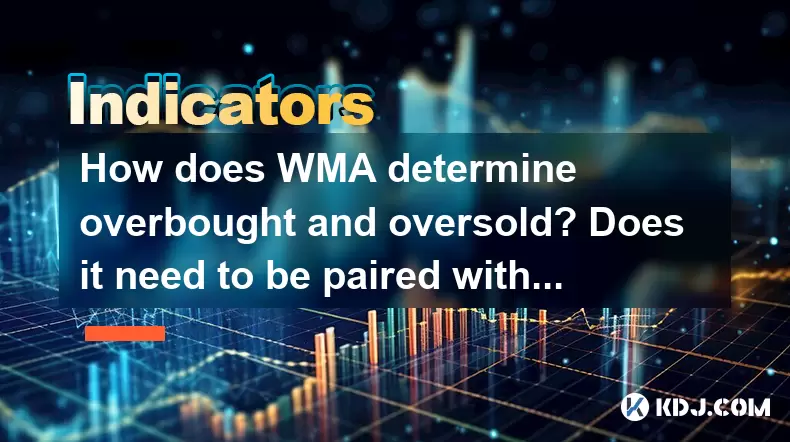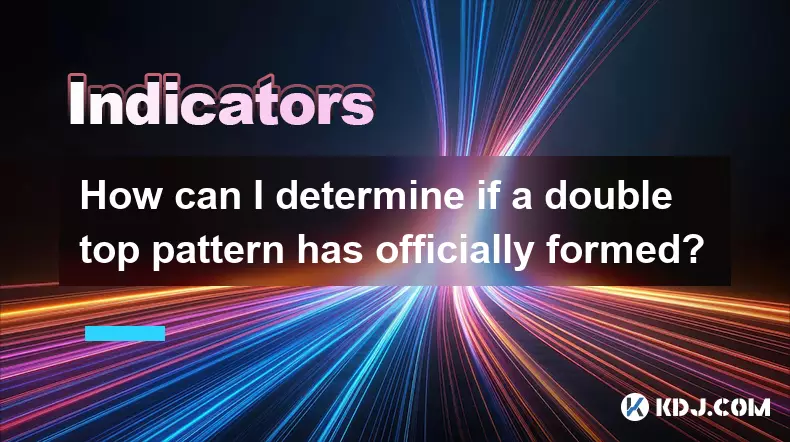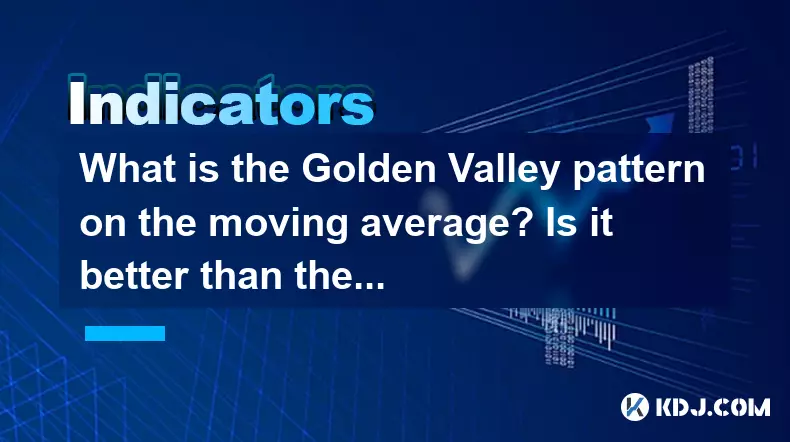-
 bitcoin
bitcoin $118548.520763 USD
3.67% -
 ethereum
ethereum $4352.564943 USD
4.79% -
 xrp
xrp $2.964058 USD
4.22% -
 tether
tether $1.000565 USD
0.05% -
 bnb
bnb $1028.372955 USD
1.46% -
 solana
solana $221.373507 USD
6.00% -
 usd-coin
usd-coin $0.999933 USD
0.02% -
 dogecoin
dogecoin $0.248633 USD
6.85% -
 tron
tron $0.341444 USD
2.38% -
 cardano
cardano $0.852946 USD
5.82% -
 hyperliquid
hyperliquid $47.869306 USD
6.15% -
 chainlink
chainlink $22.561476 USD
6.01% -
 ethena-usde
ethena-usde $1.001258 USD
0.05% -
 avalanche
avalanche $30.660000 USD
2.06% -
 stellar
stellar $0.400917 USD
9.76%
How does WMA determine overbought and oversold? Does it need to be paired with RSI?
WMA gives more weight to recent prices, making it useful for crypto trading; when combined with RSI, it helps identify overbought and oversold conditions more accurately.
May 21, 2025 at 10:21 pm

Understanding the WMA Indicator
The Weighted Moving Average (WMA) is a type of moving average that gives more weight to recent price data. Unlike a simple moving average where all data points are equally weighted, the WMA prioritizes the most recent prices, making it more responsive to new information. This characteristic makes the WMA particularly useful in the fast-paced environment of cryptocurrency trading.
How WMA Determines Overbought and Oversold Conditions
To determine overbought and oversold conditions using the WMA, traders typically compare the current price of a cryptocurrency to the WMA line. An asset is considered overbought when its price is significantly above the WMA line, suggesting that the price may have risen too quickly and could be due for a correction. Conversely, an asset is considered oversold when its price is significantly below the WMA line, indicating that the price may have fallen too rapidly and could be poised for a rebound.
The exact thresholds for what constitutes 'significantly' above or below the WMA can vary depending on the trader's strategy and the specific cryptocurrency being analyzed. Some traders might consider a price that is 5% above the WMA as overbought, while others might use a 10% threshold. Similarly, a price 5% below the WMA might be seen as oversold by some, and 10% by others.
The Role of RSI in Conjunction with WMA
While the WMA can be a powerful tool on its own, many traders find it beneficial to use it in conjunction with other indicators like the Relative Strength Index (RSI). The RSI is a momentum oscillator that measures the speed and change of price movements, ranging from 0 to 100. Traditionally, an RSI value above 70 is considered overbought, and a value below 30 is considered oversold.
Using RSI alongside WMA can provide a more comprehensive view of market conditions. For instance, if the price of a cryptocurrency is above the WMA and the RSI is above 70, this might reinforce the signal that the asset is overbought. Similarly, if the price is below the WMA and the RSI is below 30, this could strengthen the case for the asset being oversold.
Setting Up WMA and RSI on a Trading Platform
To effectively use WMA and RSI together in a trading platform, follow these steps:
- Choose a Trading Platform: Select a platform that supports both WMA and RSI indicators, such as TradingView, Binance, or Coinbase Pro.
- Add WMA Indicator:
- Navigate to the indicators menu.
- Search for 'Weighted Moving Average' or 'WMA.'
- Add the WMA to your chart.
- Configure the period length (e.g., 20 periods) based on your trading strategy.
- Add RSI Indicator:
- Go back to the indicators menu.
- Search for 'Relative Strength Index' or 'RSI.'
- Add the RSI to your chart.
- Adjust the RSI period if needed (the default is usually 14 periods).
- Analyze the Chart:
- Observe the price in relation to the WMA line.
- Check the RSI values to see if they align with overbought or oversold conditions.
Interpreting Signals from WMA and RSI
When interpreting signals from both WMA and RSI, it's important to look for convergence or divergence. Convergence occurs when both indicators suggest the same market condition (e.g., both indicate overbought), which can be a strong signal for traders. Divergence happens when the indicators give conflicting signals (e.g., WMA suggests overbought but RSI does not), which might indicate a need for further analysis or a weaker signal.
Practical Example of Using WMA and RSI
Consider a scenario where you are analyzing Bitcoin (BTC) on a daily chart. You notice that the price of BTC is 7% above the 20-period WMA line, and the RSI is at 75. This combination of signals would suggest that BTC is overbought. As a trader, you might decide to take a short position or wait for a potential price correction.
In another scenario, if the price of BTC is 8% below the 20-period WMA line and the RSI is at 25, this would indicate that BTC is oversold. You might then consider taking a long position or waiting for a potential price rebound.
Adjusting WMA and RSI for Different Time Frames
The effectiveness of WMA and RSI can vary depending on the time frame you are using. For short-term trading, you might use a shorter period for both WMA and RSI (e.g., 10 periods for WMA and 7 periods for RSI). For longer-term analysis, longer periods might be more appropriate (e.g., 50 periods for WMA and 21 periods for RSI).
When adjusting these periods, consider the volatility and liquidity of the cryptocurrency you are analyzing. Highly volatile assets might benefit from shorter periods to capture rapid price movements, while less volatile assets might require longer periods for more reliable signals.
Frequently Asked Questions
Q: Can WMA be used effectively without RSI?A: Yes, WMA can be used effectively without RSI. Traders often use WMA alone to identify trends and potential reversal points based on the price's position relative to the WMA line. However, combining WMA with RSI can provide additional confirmation and enhance the reliability of the signals.
Q: How often should I adjust the WMA and RSI settings?A: The frequency of adjusting WMA and RSI settings depends on your trading strategy and the market conditions. For active traders, daily or even intraday adjustments might be necessary. For longer-term investors, monthly or quarterly adjustments might suffice. Always monitor the effectiveness of your settings and adjust as needed based on performance.
Q: Can WMA and RSI be used for all cryptocurrencies?A: WMA and RSI can be used for most cryptocurrencies, but their effectiveness can vary depending on the asset's liquidity and volatility. For highly liquid and widely traded cryptocurrencies like Bitcoin and Ethereum, these indicators tend to be more reliable. For less liquid or more volatile altcoins, the signals might be less consistent, and additional analysis might be required.
Q: What other indicators can be used with WMA and RSI?A: Other indicators that can be used alongside WMA and RSI include the Moving Average Convergence Divergence (MACD), Bollinger Bands, and the Stochastic Oscillator. Each of these indicators provides different insights into market conditions, and combining them with WMA and RSI can create a more robust trading strategy.
Disclaimer:info@kdj.com
The information provided is not trading advice. kdj.com does not assume any responsibility for any investments made based on the information provided in this article. Cryptocurrencies are highly volatile and it is highly recommended that you invest with caution after thorough research!
If you believe that the content used on this website infringes your copyright, please contact us immediately (info@kdj.com) and we will delete it promptly.
- BlockDAG, DOGE, HYPE Sponsorship: Crypto Trends Shaping 2025
- 2025-10-01 00:25:13
- Deutsche Börse and Circle: A StableCoin Adoption Powerhouse in Europe
- 2025-10-01 00:25:13
- BlockDAG's Presale Buzz: Is It the Crypto to Watch in October 2025?
- 2025-10-01 00:30:13
- Bitcoin, Crypto, and IQ: When Genius Meets Digital Gold?
- 2025-10-01 00:30:13
- Stablecoins, American Innovation, and Wallet Tokens: The Next Frontier
- 2025-10-01 00:35:12
- NBU, Coins, and Crypto in Ukraine: A New Yorker's Take
- 2025-10-01 00:45:14
Related knowledge

What is a tower bottom candlestick pattern? Does it have a high success rate?
Sep 22,2025 at 07:18am
Tower Bottom Candlestick Pattern Explained1. The tower bottom candlestick pattern is a reversal formation that typically appears at the end of a downt...

What is a black hole pattern in the MACD indicator? Is it a cause for concern?
Sep 21,2025 at 06:54pm
Bitcoin's Role in Decentralized Finance1. Bitcoin remains the cornerstone of decentralized finance, serving as a benchmark for value and security acro...

How can I use the psychological line (PSY) to determine market sentiment?
Sep 17,2025 at 02:19pm
Understanding the Psychological Line (PSY) in Cryptocurrency TradingThe Psychological Line, commonly referred to as PSY, is a momentum oscillator used...

How can I determine if a double top pattern has officially formed?
Sep 21,2025 at 03:18am
Understanding the Structure of a Double Top Pattern1. A double top pattern consists of two distinct peaks that reach approximately the same price leve...

What is the Golden Valley pattern on the moving average? Is it better than the Silver Valley pattern?
Sep 21,2025 at 02:54pm
Understanding the Golden Valley Pattern in Moving Averages1. The Golden Valley pattern is a technical formation observed in cryptocurrency price chart...

What does a death cross of the RSI in the strong zone (above 50) mean?
Sep 17,2025 at 10:54pm
Understanding the Death Cross in RSI Context1. The term 'death cross' is traditionally associated with moving averages, where a short-term average cro...

What is a tower bottom candlestick pattern? Does it have a high success rate?
Sep 22,2025 at 07:18am
Tower Bottom Candlestick Pattern Explained1. The tower bottom candlestick pattern is a reversal formation that typically appears at the end of a downt...

What is a black hole pattern in the MACD indicator? Is it a cause for concern?
Sep 21,2025 at 06:54pm
Bitcoin's Role in Decentralized Finance1. Bitcoin remains the cornerstone of decentralized finance, serving as a benchmark for value and security acro...

How can I use the psychological line (PSY) to determine market sentiment?
Sep 17,2025 at 02:19pm
Understanding the Psychological Line (PSY) in Cryptocurrency TradingThe Psychological Line, commonly referred to as PSY, is a momentum oscillator used...

How can I determine if a double top pattern has officially formed?
Sep 21,2025 at 03:18am
Understanding the Structure of a Double Top Pattern1. A double top pattern consists of two distinct peaks that reach approximately the same price leve...

What is the Golden Valley pattern on the moving average? Is it better than the Silver Valley pattern?
Sep 21,2025 at 02:54pm
Understanding the Golden Valley Pattern in Moving Averages1. The Golden Valley pattern is a technical formation observed in cryptocurrency price chart...

What does a death cross of the RSI in the strong zone (above 50) mean?
Sep 17,2025 at 10:54pm
Understanding the Death Cross in RSI Context1. The term 'death cross' is traditionally associated with moving averages, where a short-term average cro...
See all articles










































































